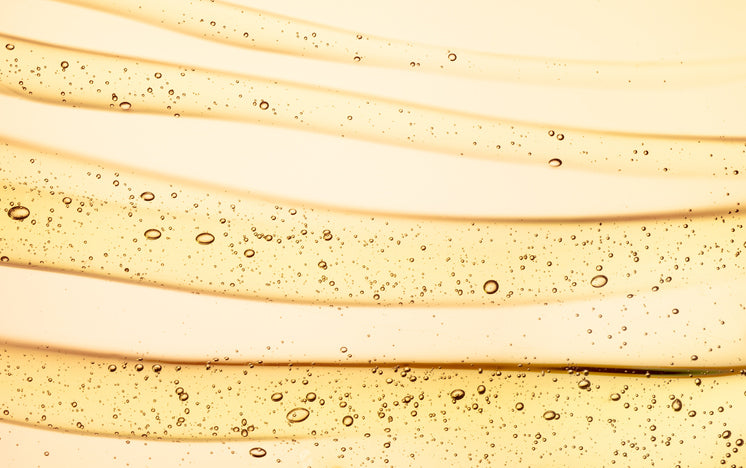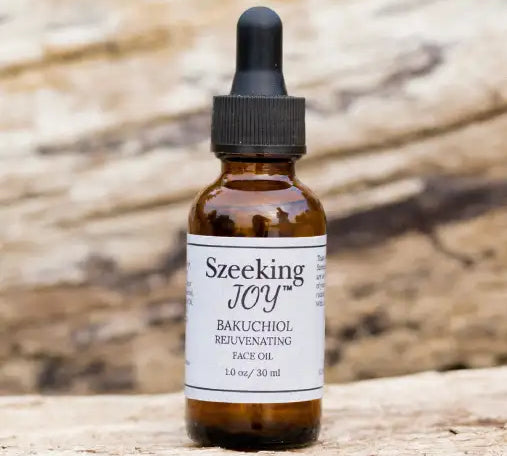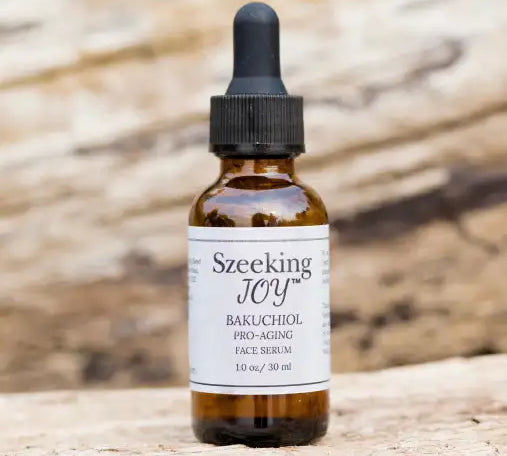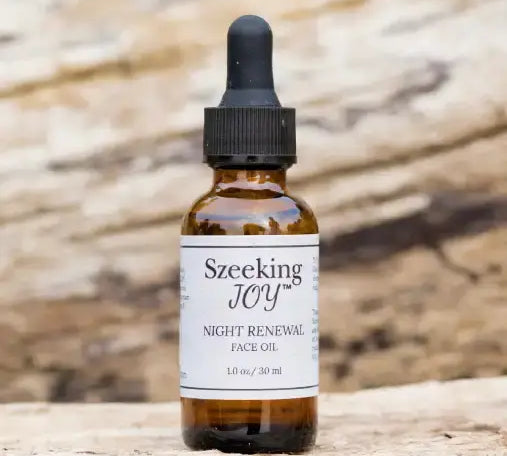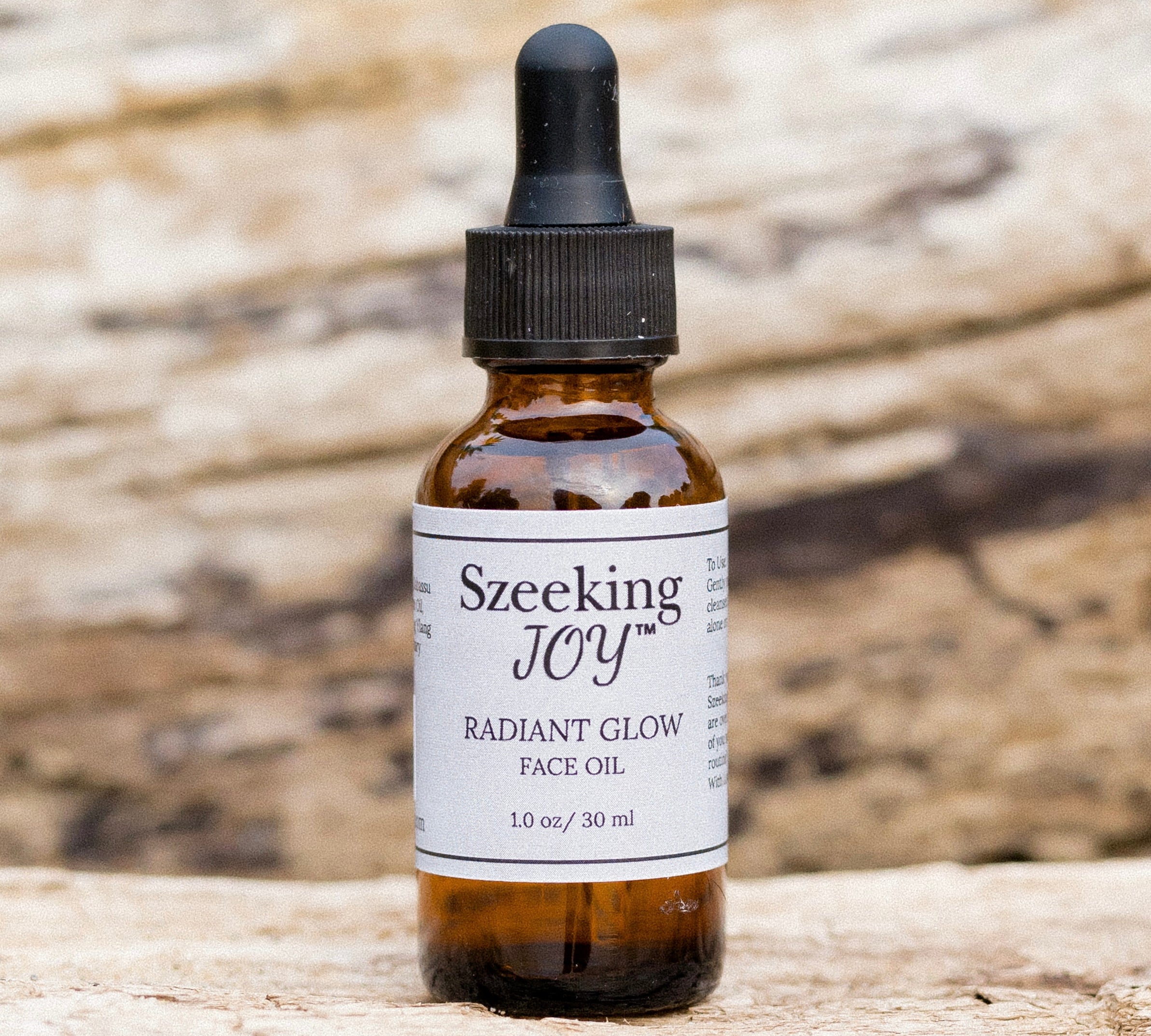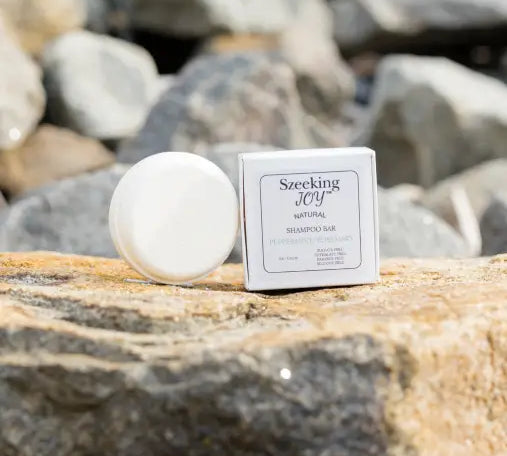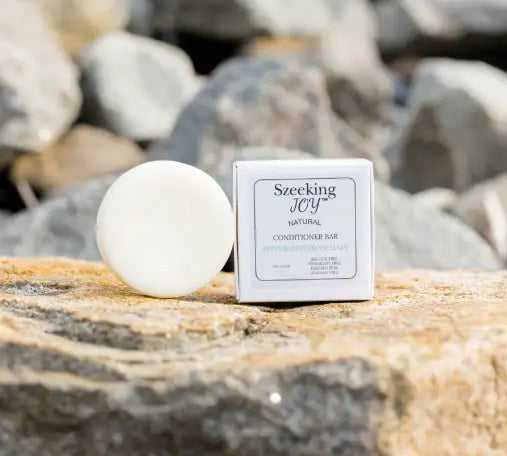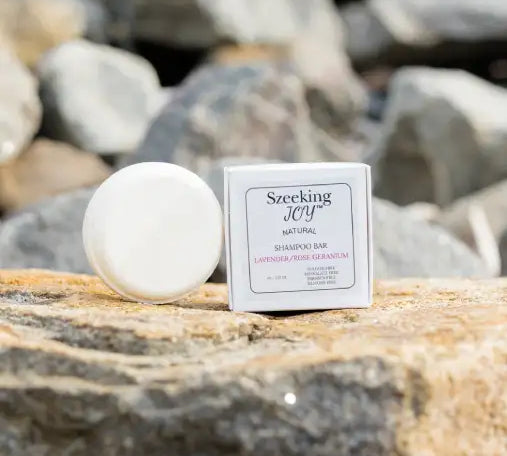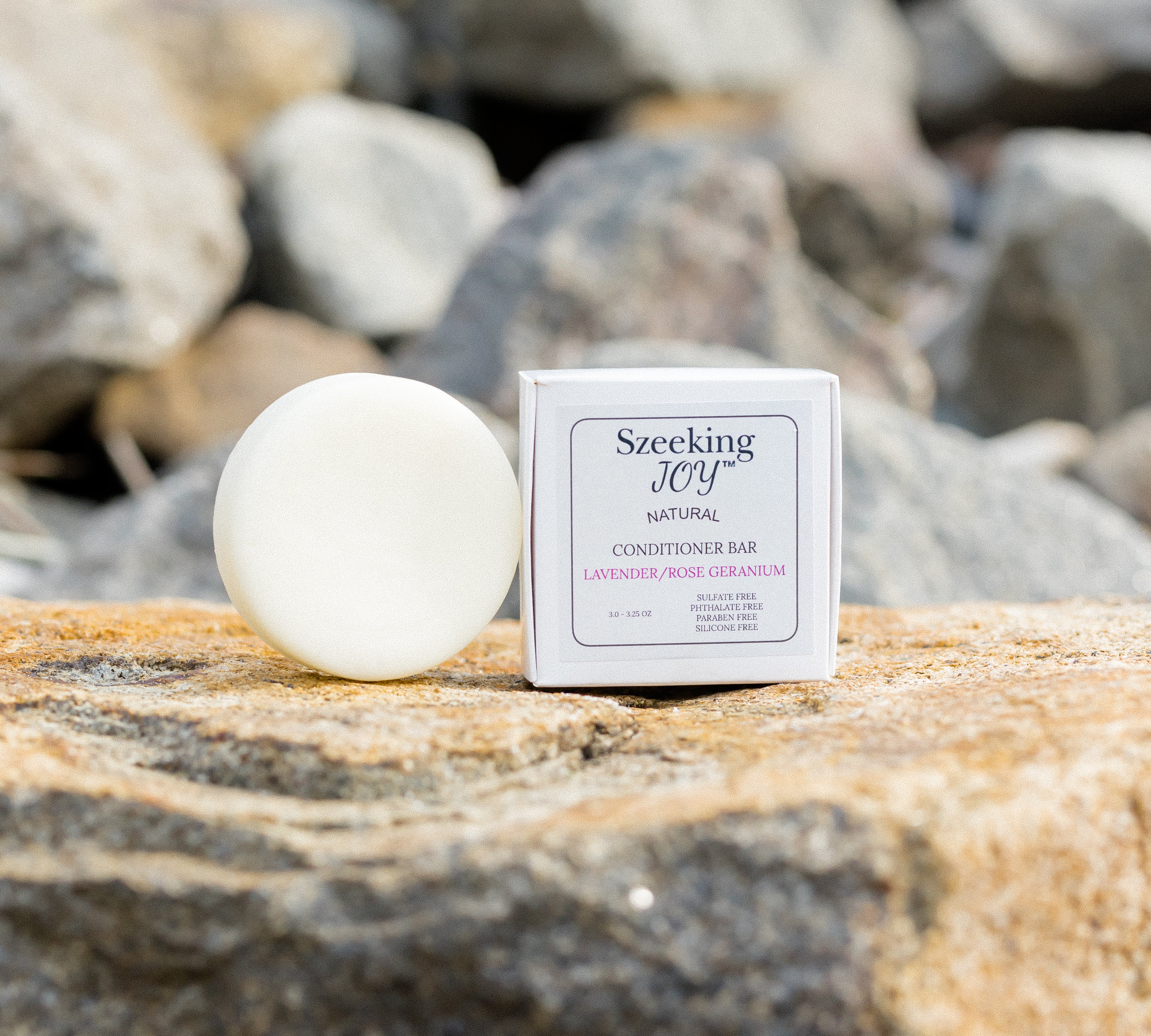At Szeeking JOY, we believe your skin and hair deserve the best—without toxic junk. This page reveals common harmful ingredients in skincare and haircare that we NEVER use and why you should avoid them too.
Our goal is simple: to empower you with knowledge so you can make safer, more conscious beauty choices. Let’s embark on this journey to clean, non-toxic beauty—because your well-being comes first!
The Dirty List: Ingredients We Avoid & Why
Ingredients To Avoid In Your Skincare & Haircare Products
Parabens
What Are They?
- Parabens are a group of synthetic compounds used as preservatives in beauty products.
Why Are They Bad?
- Endocrine Disruption: can mimic estrogen in the body, potentially leading to hormonal imbalances and reproductive health issues.
- Skin Irritation: can cause skin irritation or allergic reactions.
- Environmental Concerns: Parabens have been detected in water sources and wildlife, raising concerns about their environmental impact and potential to disrupt ecosystems.
Common Names:
- Methylparaben, Propylparaben, Butylparaben, Ethylparaben
Phthalates
What Are They?
- Phthalates are a group of chemicals used to make plastics more flexible and harder to break.
- They are also used as a solvent or binding agent in many products such as shampoo and conditioners.
- It is used to soften other substances, enhance absorption, increases spreadability, and helps the fragrance last longer.
Why Are They Bad?
- Endocrine Disruptors: they can interfere with the body’s hormone systems, potentially leading to reproductive and developmental
problems. - Can Cause Skin and Scalp Irritation and Allergies
- Environmental Impact: they can accumulate in the environment and have been found in water sources, affecting wildlife and ecosystems
Common Names:
- DBP (dibutyl phthalate), DEP (diethyl phthalate), fragrance (phthalates are often hidden in fragrance mixtures)
Sulfates
What Are They?
- Sulfates are detergents used for their foaming properties in shampoos and cleansers.
Why Are They Bad?
- Stripping Natural Oils: Sulfates can strip the hair and scalp of natural oils, leading to dryness, irritation, and sometimes damage to the hair follicles.
- Irritation: They can cause irritation to the eyes, skin, and scalp, particularly in individuals with sensitive skin or conditions like eczema.
- Environmental Impact: Sulfates are not always biodegradable, contributing to environmental pollution.
Common Names:
- Sodium Lauryl Sulfate (SLS), Sodium Laureth Sulfate (SLES)
Silicones
What Are They?
- Silicones are synthetic polymers used in skincare products to create a smooth, silky feel on the skin, fill in fine lines, and form a protective barrier over the skin.
- In haircare products, they make hair appear smooth, shiny, and frizz-free.
Why Are They Bad?
- Buildup and Barrier Formation: Can build up on the skin and hair, leading to clogged pores and preventing other nutrients from penetrating. Build up can weigh down the hair, making it limp and lifeless.
- False Sense of Skin Health: Silicones can make the skin feel artificially smooth and hydrated, masking underlying skin issues and not providing any real, long-term nourishment or hydration to the skin.
- Hair Health: Over-reliance on silicone-based products can lead to long-term hair health issues, as they mainly provide a superficial improvement in hair texture and appearance rather than offering any real nourishing benefits.
- Environmental Concerns: Being synthetic, certain silicones are not biodegradable and can contribute to environmental pollution, particularly affecting aquatic life.
Common Names:
- Dimethicone, Cyclomethicone, anything ending in -cone or -siloxane
Triclosan
What Is It?
- Triclosan is an antibacterial and antifungal agent that has been used in some haircare products and deodorants.
Why Is It Bad?
- Antibiotic Resistance: Triclosan can contribute to antibiotic resistance, making bacterial infections harder to treat.
- Hormonal Effects: It is suspected to be an endocrine disruptor, potentially affecting thyroid function and reproductive hormones.
- Environmental Toxicity: Triclosan can persist in the environment and negatively impact aquatic ecosystems and wildlife.
Common Names:
- Triclosan, Microban, Biofresh
Propylene Glycol
What Is It?
- Propylene Glycol is a synthetic compound used as a humectant, solvent, and skin-conditioning agent in many skincare products.
- In haircare, it helps products retain moisture and prevent them from drying out.
Why Is It Bad?
- Can irritate skin, particularly in individuals with skin sensitivities or allergies. There are also concerns about systemic toxicity at higher concentrations.
Common Names:
- Propylene Glycol, 1,2-Propanediol
Mineral Oil
What Is It?
- Mineral oil is a byproduct of petroleum distillation, commonly used as an emollient in skincare and haircare products.
Why Is It Bad?
- Pore Clogging: Can create a barrier on the skin, trapping dirt and bacteria, leading to breakouts and acne.
- Lack of Nourishment: Does not provide any nutrients to the skin or hair, only offering a temporary illusion of moisture.
- Environmental Concerns: Being a petroleum byproduct, its production and disposal contribute to environmental pollution.
Common Names:
- Paraffinum Liquidum, Petrolatum, White Oil
Alcohols
What Are They?
- Alcohols, such as ethanol or isopropyl alcohol, are used in beauty products for their drying and antimicrobial properties.
Why Are They Bad?
- Drying Effect: Can strip away natural oils from the skin and hair, leading to dryness, irritation, and weakened barriers.
- Sensitivity: May cause redness, irritation, or exacerbate skin conditions like eczema.
- Toxicity: Certain alcohols can be toxic if ingested or absorbed in large quantities.
Common Names:
- Ethanol, Isopropyl Alcohol, SD Alcohol, Denatured Alcohol
Polyethylene Glycols (PEGs)
What Are They?
- PEGs are synthetic polymers used as emulsifiers, thickeners, and moisture carriers in beauty products.
Why Are They Bad?
- Skin Irritation: Can cause skin irritation and sensitivity, especially in damaged or broken skin.
- Contamination Concerns: PEGs can be contaminated with ethylene oxide and 1,4-dioxane, both of which are carcinogens.
- Environmental Impact: PEGs are not easily biodegradable, contributing to environmental pollution.
Common Names:
- PEG-40, PEG-100 Stearate, PEG-7 Glyceryl Cocoate
Synthetic Fragrances
What Are They?
- Synthetic fragrances are complex mixtures of many different chemicals used to give skincare products a pleasant scent.
Why Are They Bad?
- "Fragrance" or "parfum" on labels can mask a mixture of potentially harmful chemicals. They are linked to allergies,
dermatitis, respiratory distress, and potential reproductive issues.
Common Names:
- Fragrance, Parfum
Chemical Dyes
What Are They?
- Chemical dyes are synthetic colorants used to add color to beauty products.
Why Are They Bad?
- Allergic Reactions: Can cause skin sensitivities, rashes, or allergic reactions in some individuals.
- Carcinogenic Potential: Some chemical dyes have been linked to cancer in animal studies.
- Environmental Pollution: Their production and disposal can lead to water and soil contamination.
Common Names:
- FD&C Blue No. 1, D&C Red No. 33, CI 16035
Why It Matters
Every ingredient you apply to your skin absorbs into your body. By avoiding these harmful chemicals, you’re protecting your skin, health, and the environment.
At Szeeking JOY, we carefully formulate our products with pure, plant-based ingredients that nourish and heal—without the toxic junk.
Ready for Truly Clean Beauty?
Explore our 100% non-toxic skincare and haircare designed for radiant, healthy skin.
Discover Szeeking JOY’s Collection
- NON-Toxic skincare
- Non-Toxic Haircare

